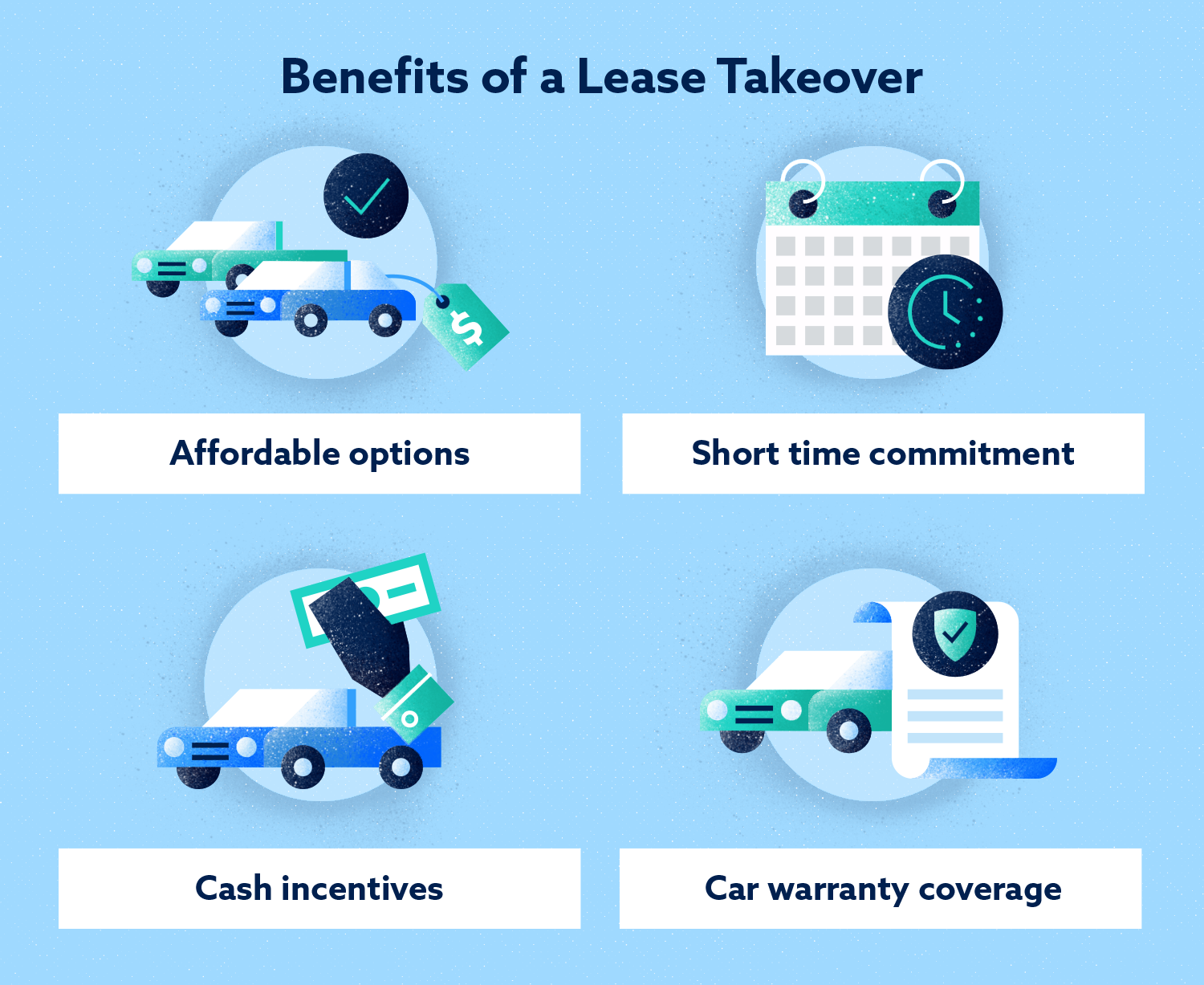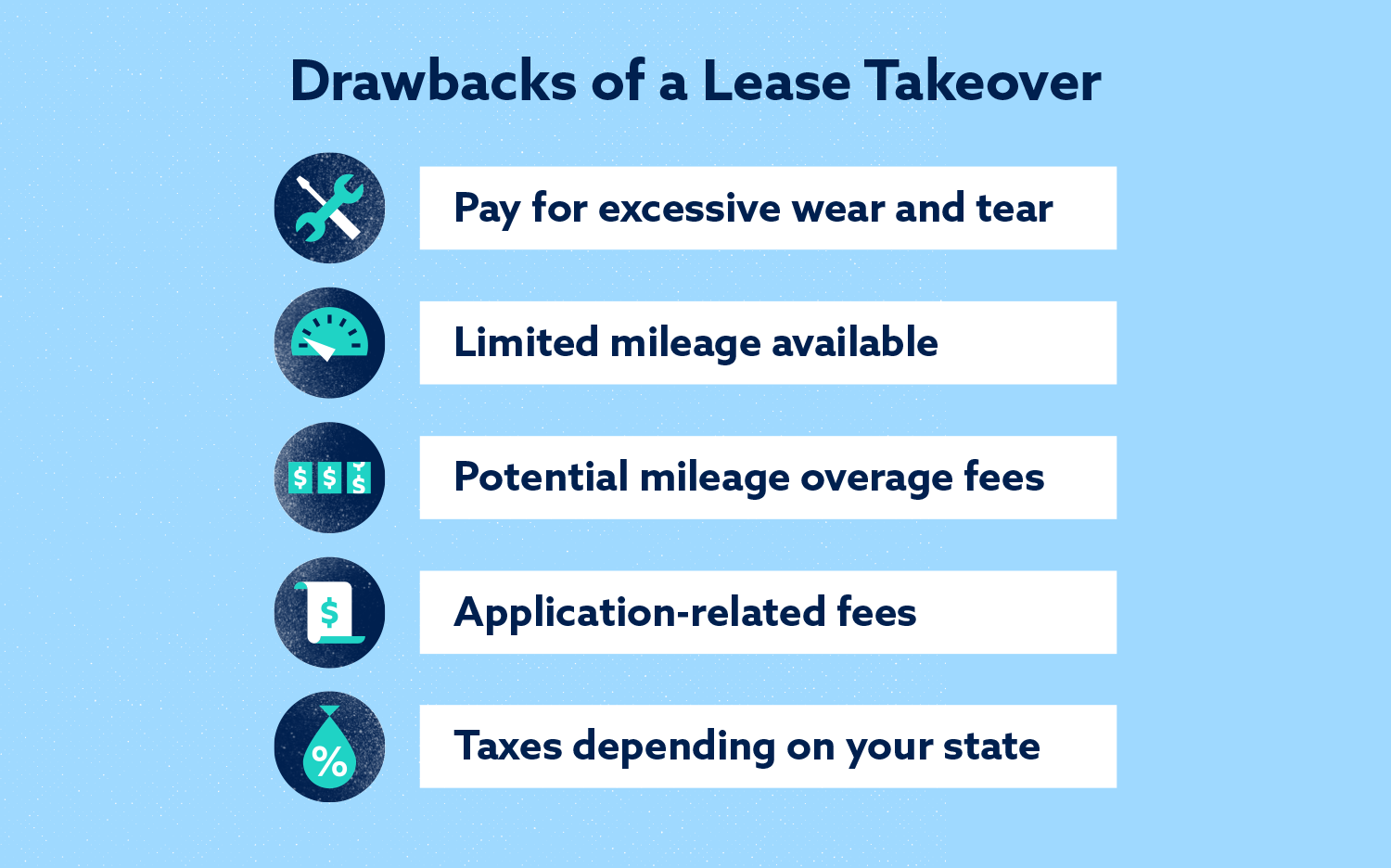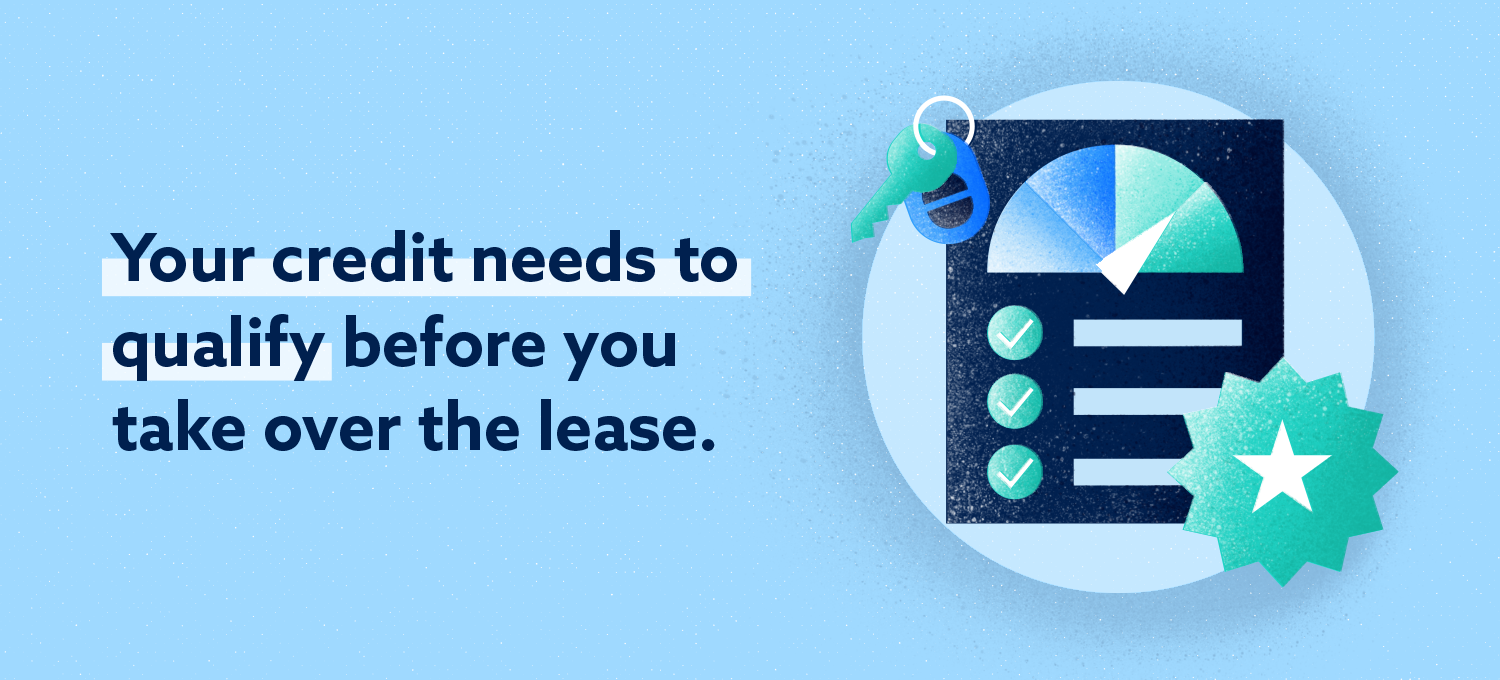
A lease takeover is when you assume someone else’s car lease and take responsibility for the rest of the lease.
A lease takeover is when you assume someone else’s car lease and take responsibility for the rest of the lease. Some people want to end their lease early because they can no longer afford payments, want to trade-in for a different car or have a life change like a new addition to the family.
Taking over someone’s existing lease has its benefits, such as trying out the vehicle without buying or committing to a full lease. It can also help bridge the gap if you’re between cars or need a car for a short time. While a car lease takeover has its advantages, there are also some risks like higher fees and taxes.
What Are the Pros of a Lease Takeover?
An auto lease takeover can offer you affordable options, a shorter time frame for trying out a vehicle and potential cash incentives. Review the advantages of a takeover below.
More Affordable Options
A lease takeover can be an affordable choice for a vehicle. For example, there’s usually no down payment necessary. Lease payments are often lower than payments would be if you bought the vehicle.
You can enjoy even lower payments if the original lessee negotiated well, traded in a car or made a down payment at the start of the lease.
Be sure to compare prices of lease takeovers with a full-term lease. Aim for the best overall cost for your situation and car needs—including monthly payments, maintenance costs and fees.
Shorter Time Commitment
Auto leases can be for any period of time, but most auto leases are for two to four years. With a car lease takeover, you might have the vehicle anywhere from six to 18 months or longer. Some leases prohibit the lessee from transferring their lease within the first few months or the last few months of the lease term.
With a short-term lease, like a year, you’re able to test out a car without much commitment. You can see if you like the vehicle before signing up for a longer lease or buying it. If you need a certain type of vehicle for a short period, such as a pick-up truck for a contract job, a takeover can be a great option.
You can also use a shorter lease time frame to save up for buying a vehicle at the end of the lease.
Other Incentives and Perks
Depending on the lease you take over, there may be perks and benefits provided. Some lease sellers offer incentives, like cash, to sweeten the deal. It’s also likely that the leased vehicle is still covered by the new car warranty should anything happen. Based on the lease agreement, certain repairs and maintenance costs may be included in the lease coverage.

What Are the Cons of a Lease Takeover?
The drawbacks of a car lease takeover include possible high fees and taxes. Review the details of any lease takeover to ensure you’re avoiding costly expenses.
Higher Fees Based on Original Lessee’s Usage
The original lessee’s maintenance of the car impacts the state the car is in when you get it. If they didn’t take care of it, you may need to pay for excessive wear and tear that you didn’t cause. Ask the original lessee for the service records and order a vehicle history report so you know what you’re getting into beforehand.
Be aware that you may also have limited mileage left on the lease, or incur fees related to mileage over the agreed-upon amount. Usually, when a lease begins, a certain amount of miles is agreed to, and there’s a charge for any miles driven over the limit.
Read the agreement and know how many miles have been used before signing on a lease assumption.
Higher Fees Based on Terms and Taxes
There are often fees associated with an auto lease takeover, such as a lease transfer fee, disposition fee and credit application fee. Sometimes a seller will pay these fees, but not always. Confirm who’s responsible for what fees before agreeing to a car lease takeover.
You may also need to pay taxes, depending on your state. Be sure to read the laws in your state before signing. You’ll also want to look into how much car insurance will cost on the new vehicle.
Allstate says that you’re required by law to have liability coverage and uninsured and underinsured motorist coverage when leasing a car. They also said your lease holder may require you to have collision coverage, comprehensive gap coverage.
On the other hand, Allstate says financed cars are also legally required to have liability insurance, but additional car insurance depends on several factors like when you live, whether you get a loan for the car and more.

How Does it Work?
Taking over a lease involves a few steps, like reviewing the details of the takeover and comparing offers. You’ll also want to have the car checked out by a mechanic before signing any paperwork.
- Stick to cars near you. Because you’ll want to check out the car, focus on available takeovers within reasonable driving distance, such as 30 or 60 miles.
- Check the details. Review the terms from the lessee along with the takeover laws and taxes in your state. Figure out what finance company issued the original lease and if they have any rules for takeovers.
- Compare offers. Look at several lease takeovers before deciding on a vehicle. Consider the type of vehicle, length of the lease takeover and all associated costs.
- Check out the lease contract. Review the lease contract in detail. Look at the remaining mileage and what maintenance and repair costs are covered.
- Get the car checked by a mechanic. Find a car mechanic to review the condition of the car to ensure you’re not adopting a problem. A small fee for this service is worth it to help you avoid huge expenses.
- Sign the paperwork. Once you know the contract details and the car passes a mechanic’s inspection, review the lease takeover paperwork and sign.
Do I Need Good Credit to Take Over a Lease?
Your credit needs to qualify before you to take over the lease, but you often don’t need as good of credit as you would with an original lease. You’re also not subject to tier pricing based on your credit because you assume the payments and pricing of the original lease.
When you take over a lease, your credit will be checked. You can check your own credit score and credit report ahead of time to see where you stand, and start taking steps to improve them if necessary.

How Much Is a Lease Transfer Fee?
The lease transfer fee depends on the leasing company but it can range anywhere from $0 to $650. The transfer fee usually includes the credit check fee, but not always. Some companies might offer a rebate on fees. You may also be able to negotiate with the seller to cover some of these expenses.
What Are My Options?
When looking for auto lease takeovers, it’s essential to do your homework. You need to understand what you’re signing up for, including the terms and costs.
If you have bad credit and are unable to take over a lease, you may be able to buy a used car with cash or a loan. Shop around for the best auto loan rates based on your needs and budget.
